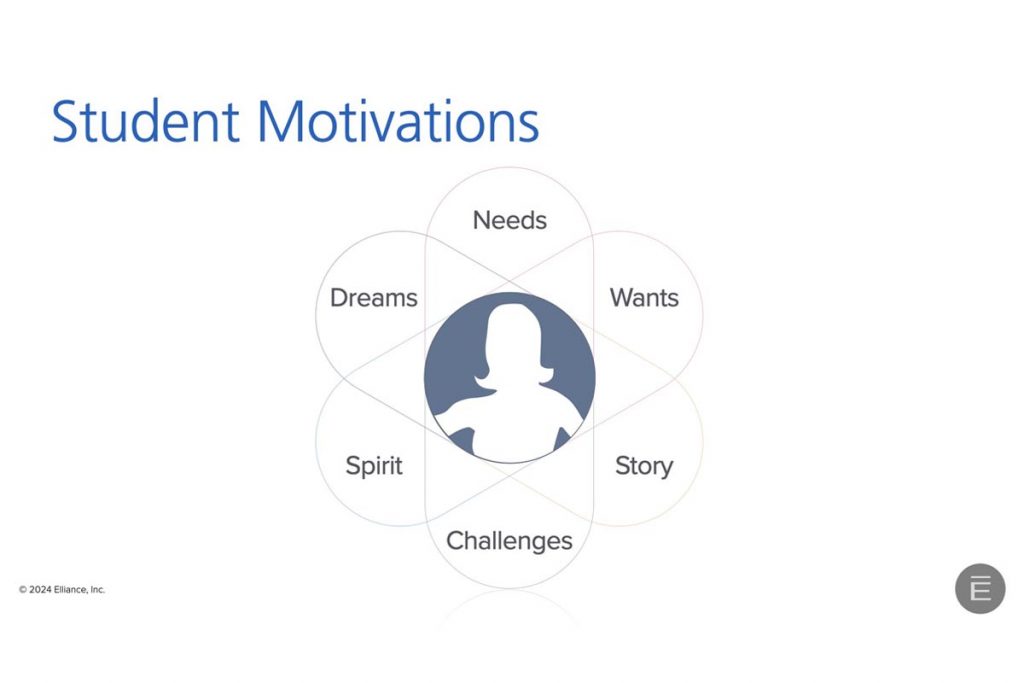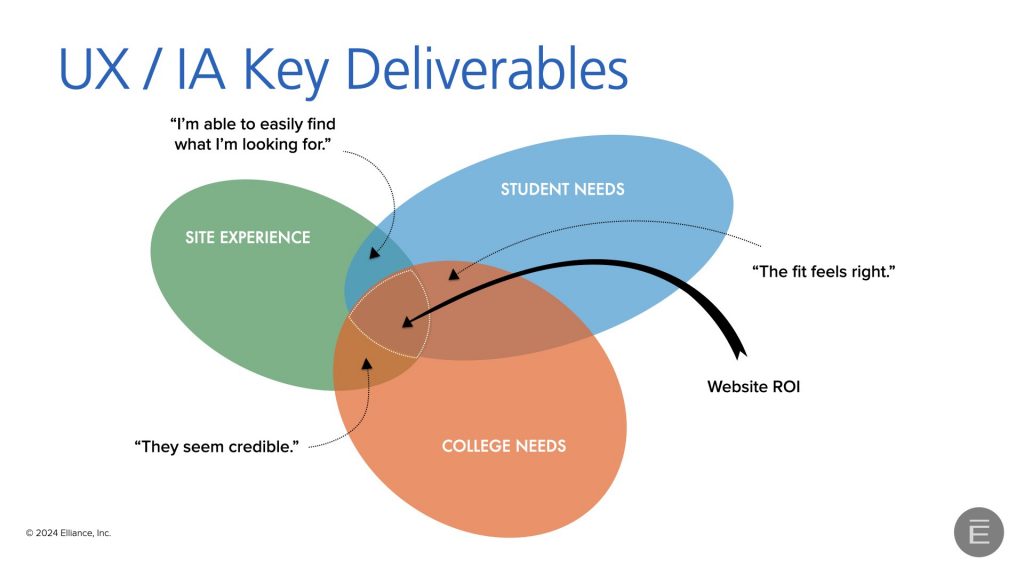| Mar 26, 2024
Higher education user experience (UX) design agency shares best practices for optimizing college and university websites to boost enrollment.

Colleges and universities are akin to a small town and serve a vast plurality of people. A college website, being its digital soul, serves a multitude of functions for its many audiences: prospective students, current students, parents, alumni, faculty & staff, donors, employers, research partners, foundations, media, financial institutions, and nearby communities at large. In this blog post, I’ll limit my focus on tips and best practices for user experience design of college websites for increasing enrollment.
It all begins with seven essential questions prospective students have

User experience is human experience. Prospective students are on their personal hero’s journey. Beyond their personal needs and wants, they have dreams they hope to fulfill, ambitions they wish to achieve, and challenges they aim to overcome. Ultimately, they want to enroll in a college which can give their spirit a fighting chance to blossom and thrive.
Let’s assume that a prospective student has just arrived at a college website after gathering preliminary information about the college on search engines, social media and word-of-mouth. An effective college web user experience should make it easy for them to quickly find the answers to seven burning questions:
- Does the college offer the programs I am interested in? If so, are enrolled students happy with the program, its faculty, its labs and facilities, its job prospects and its support network?
- Can I afford to attend this college? Can it supplement what my family or I can afford to pay with sufficient financial aid to cover the tuition, room and board costs?
- What are my chances of being admitted to the college, given my grades, standardized test scores and experiences?
- What are the campus community and culture like? Will I fit in? Will I belong? Will I thrive? Will I find “my people” there?
- What are the chances of me getting a good job after graduation that’ll ultimately put me on a trajectory for a respectable career and life?
- If everything checks out, what are the deadlines and next steps?
- Is this college and program worthy?
A good college website user experience must meet a few key criteria
Broadly speaking, an intuitive and wholesome college website must meet three criteria. It must be:
- Informative; the student must be able to easily find answers to at least the seven essential questions outlined earlier.
- Inspiring: the student must feel a good fit between themselves, and the college and the program of interest.
- Trusted: the student must be able to trust and respect the institution.
Executed gracefully, these factors are the surest path to garnering a return on time, energy and monetary investment.

Top best practices that college user experience designers must keep in mind
From a prospective student viewpoint, a good college website must meet the following criteria:
- Given that most prospective students live on their mobile devices, a college website must work gracefully on popular smartphonses.
- Clear college brand identity and essence.
- Intuitive navigation through the collapsible hamburger menu.
- Uncluttered, distilled information that leads students to the answers to the seven key questions outlined above.
- Beautiful, inspiring design.
- Photographs that tell stories. Videos that are short and to the point.
- Intuitive interaction design for carousels, accordions, forms, videos, etc.
- Simple, yet powerful site search.
- Accessible to special needs students viewing the website on their unique special devices and machine readers.
- Ability to share the page with friends and loved ones.
- Clearly convey deadlines and next steps.
- Silently powered by unobtrusive SEO so all programs, centers of excellence, informative blog posts, magazine stories are ranked and findable on search engines.
A more formal way to distill all this into a framework is as follows:

It takes a disciplined approach to arrive at an intuitive experience design. Steps include discovery, competitive benchmarking, persona development, journey mapping, content strategy and creation of sitemap and wireframes followed by design, copywriting, website development and user testing.
In an upcoming blog posts, I’ll address my focus on tips and best practices for user experience design of college websites for increasing faculty, staff, alumni, partner and media engagement.
If you are seeking a higher education marketing agency with expertise in user experience design, please see our work and consider partnering with us.
